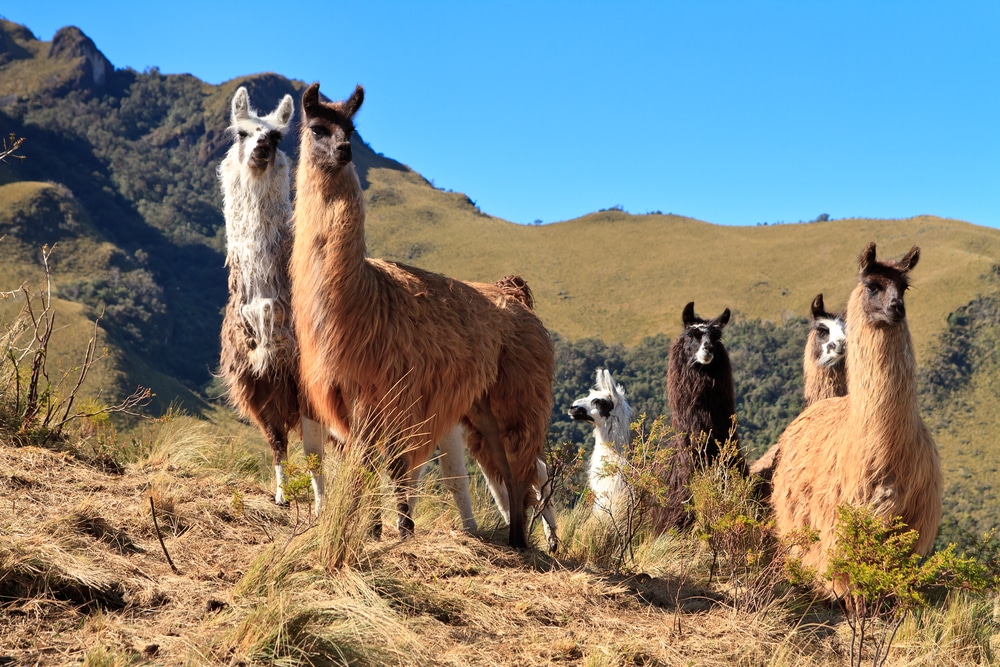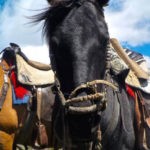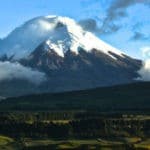From megadiverse flora and fauna to the closest country to space, these are the most interesting facts about Ecuador
Despite its relatively small size compared with local giants Brazil and Argentina, Ecuador is home to an astounding array of wonders, including picturesque colonial towns, the Amazon rainforest, the spectacular peaks of the Andes and the fragile but alluring Galápagos Islands.
What is Ecuador famous for? Whether it’s nature, wildlife, culture, anthropology or language, this diverse country is sure to impress.
Here are the most interesting facts about Ecuador we picked up on our journey through its lands (and seas).
Interesting facts about Ecuador
1. The national tree of Ecuador is the cinchona tree which produces quinine, the first drug used to prevent and treat malaria.
(Source: BBC Travel)
2. Ecuador is one of only two countries in South America that does not share a border with Brazil.
(Source: Google Maps)
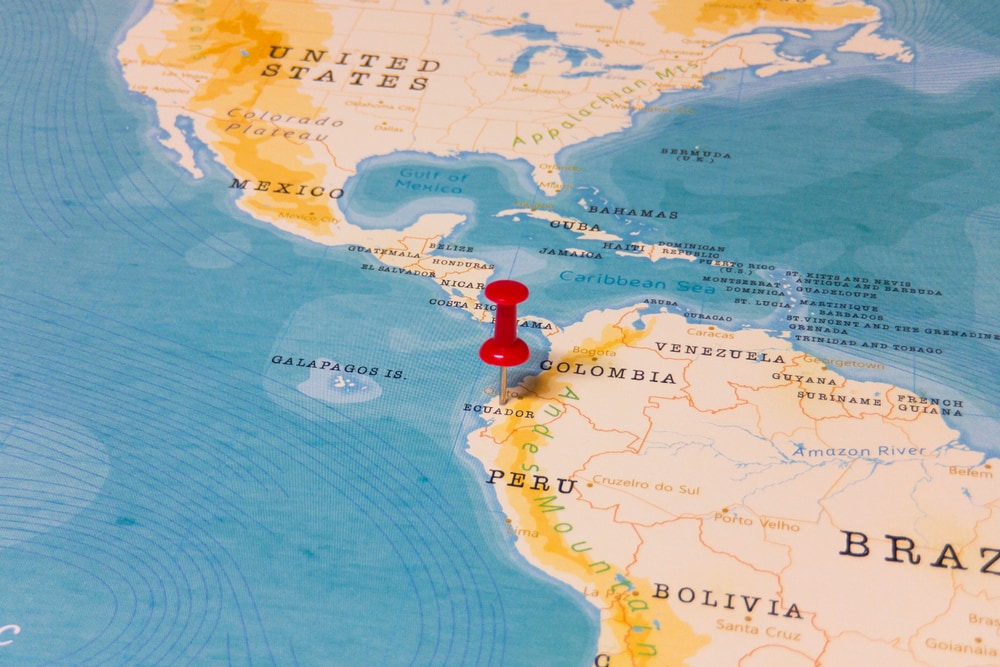
3. The US dollar is the official currency in Ecuador. The country adopted the US dollar in 2000 after the 118-year-old sucre suffered severe inflation.
(Source: The Guardian)
4. In 2008, Ecuador was the first country to recognise the rights of nature officially. Rather than treating nature as property, Ecuador recognises that nature has constitutional rights and has the ‘right to exist, persist, maintain and regenerate its vital cycles.’
(Source: Law & Social Inquiry, Inside Climate News)
5. Despite its size, Ecuador has 10% of the planet’s plant species, 8% of its animal species and 18% of its bird species. Almost 3,800 species of vertebrates, 1,550 mammals, 350 reptiles, 375 amphibians, 800 freshwater fish and 450 saltwater fish have been identified in Ecuador.
(Source: Embassy of Ecuador)
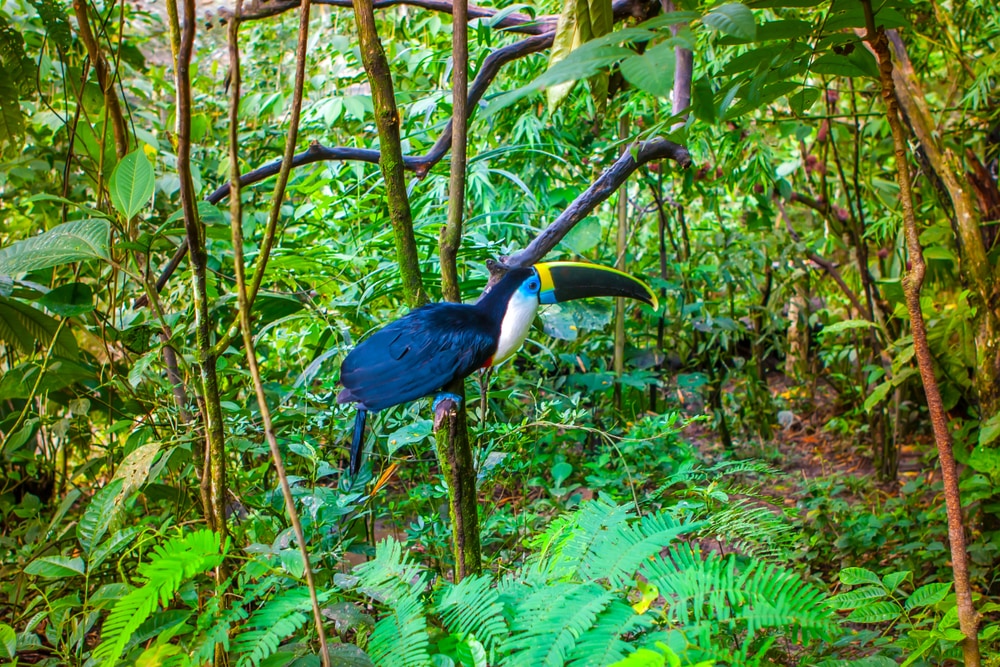
6. In fact, Ecuador is one of 17 megadiverse countries in the world and has the most biodiversity per square kilometre of any nation.
(Source: The Telegraph)
7. Ecuador is home to the only person in the world who operates a seismic monitoring station from the branches of a tree. Carlos Sánchez, known as ‘the volcano-watcher’, monitors Tungurahua – one of the world’s most active volcanoes – from a tiny treehouse on the side of a mountain.
(Source: BBC Travel)
8. Every day, Sánchez is also visited by hundreds of people who come to ride a swing that he built for his grandchildren. The swing hangs off a 30m ledge at what has become known as La Casa del Arbol (The Treehouse).
(Source: BBC Travel)
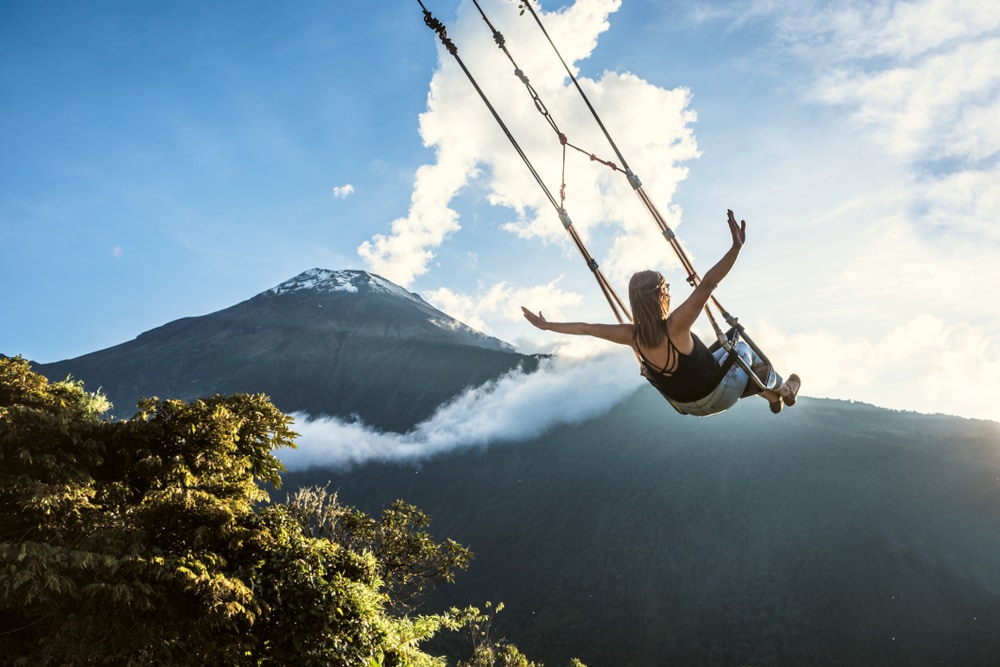
9. Ecuador is one of three countries created in 1830 following the collapse of Gran Colombia. After independence from the Spanish colony, the Viceroyalty of New Granada, the short-lived republic of Gran Colombia (1819–30) was created. It included the territories of present-day Colombia, Venezuela, Ecuador and Panama as well as parts of northern Peru, western Guyana and northwest Brazil.
(Source: Encyclopædia Britannica)
10. Probably the most widely known fact about Ecuador is that it is named after the equator which runs through the country. It is in fact the only country in the world officially named after a geographical feature. The official name, República del Ecuador, translates as ‘The Republic of the Equator’.
(Source: Encyclopedia.com)
11. Ecuador’s flag is made up of three stripes of yellow, blue and red with the coat of arms in the centre. The flag is based on the flag of Gran Colombia, with yellow representing sunshine, grain, and mineral wealth; blue the sky, sea, and rivers; and red the blood the patriots spilt in the struggle for freedom and justice.
(Source: CIA World Factbook)
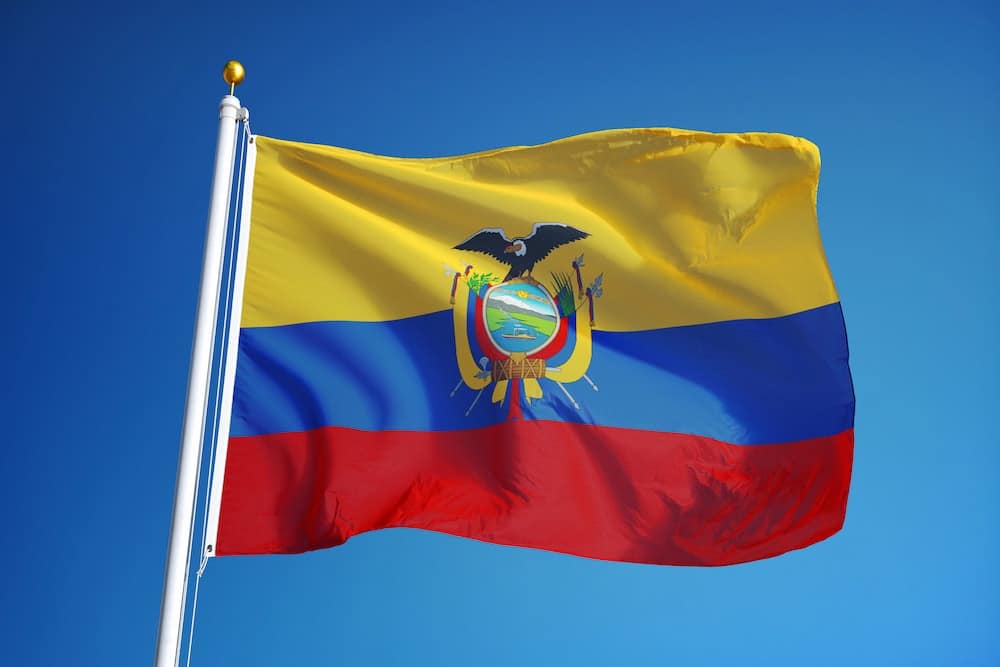
12. In order to distinguish it from the Colombian flag, Ecuador’s flag also features the country’s coat of arms. The design includes a condor, a shield with snowcapped mountains, a river, a steamship and a sun, as well as a wreath, hanging flags and a fasces (a bundle of rods with a projecting axe blade).
(Source: Encyclopædia Britannica)
13. Ecuador has the world’s first and second UNESCO World Heritage Sites. At the inaugural UNESCO World Heritage conference in 1978, 32 sites were initially designated. Every World Heritage Site has a number – site #1 is the Galápagos Islands and #2 is the city of Quito.
(Source: UNESCO)
14. The equator is widely promoted at the tourist attraction Ciudad Mitad del Mundo (Middle of the World City) 26km north of the capital, Quito. This is supposed to be where one can stand with one foot in the northern hemisphere and one in the southern. Unfortunately, thanks to modern re-measurements the exact equator is said to lie 240m north of the marked line and monument. Doh!
(Source: Smithsonian Magazine)
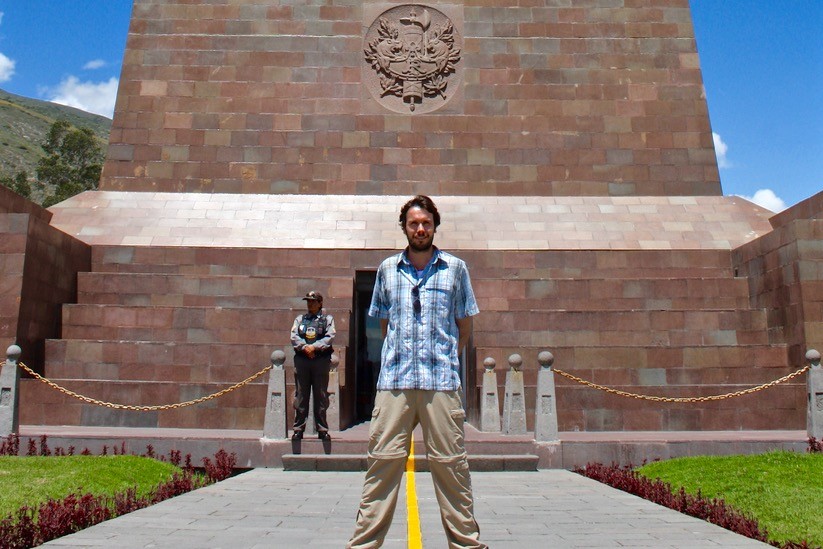
15. Quito, Ecuador’s capital city, is 2,850m above sea level, making it the highest official capital city in the world. La Paz in Bolivia is higher but it cheats a little as it is not the constitutional capital (that’s Sucre), only the seat of government. Nothing’s ever simple in Bolivia!
(Source: The Telegraph)
16. Charles Darwin visited Ecuador’s Galápagos Islands in 1835 and largely based his theory of evolution on the discoveries he made there.
(Source: Darwin Online)
17. Guinea pig, known as ‘cuy’, is considered a delicacy in Ecuador, its consumption is seen as an ancient tradition. After Kia’s reaction to me eating reindeer heart in Finland, I thought it best to refrain…
(Source: BBC)

18. Ecuador is the world’s largest exporter of bananas, accounting for almost 27% of all bananas exported in 2021 worth around $3.67 billion.
(Source: Observatory of Economic Complexity)
19. Ecuador was voted the best country for expats for two years running in 2014 and 2015. It still consistently ranks among the top ten countries, ranking 8th in the 2019 index. Quality of life, cost of living and personal finances were all cited as excellent reasons to up sticks and head to the equator.
(Source: InterNations)
20. The Panama hat is actually from Ecuador. Straw hats woven along the Ecuadorian coast were taken to Panama initially to be sold to canal workers and, after the canal opened, to affluent westerners passing through the Panama Canal.
(Source: Montecristi Panama Hats)
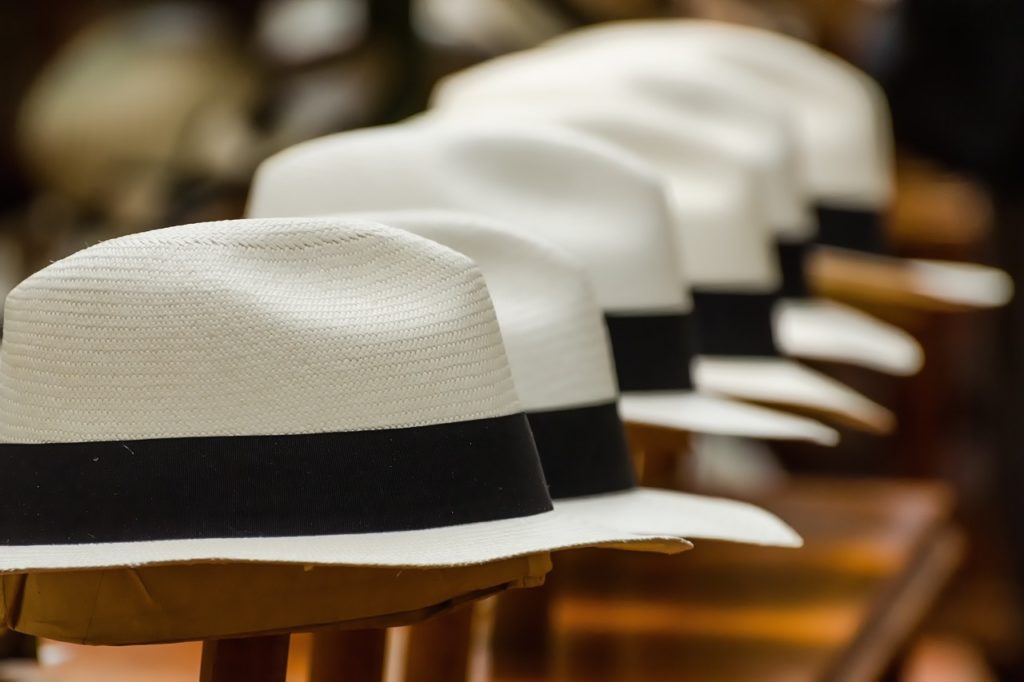
21. One of the most interesting facts about Ecuador’s culture is that there are at least 14 recognised languages spoken in the country. Spanish is the official language of Ecuador but there are also 13 indigenous languages recognised including Quichua and Shuar.
(Source: CIA Factbook)
22. In April 2019, Ecuador granted political asylum to WikiLeaks founder Julian Assange. Under investigation by the US government and facing extradition to Sweden, Assange sought refuge at the Embassy of Ecuador in London.
(Source: Telegraph)
23. In April 2019, Lenin Moreno said the country had “reached its limit on the behaviour of Mr Assange” and invited British police into the embassy in London where the Wikileaks co-founder was finally arrested.
(Source: BBC)
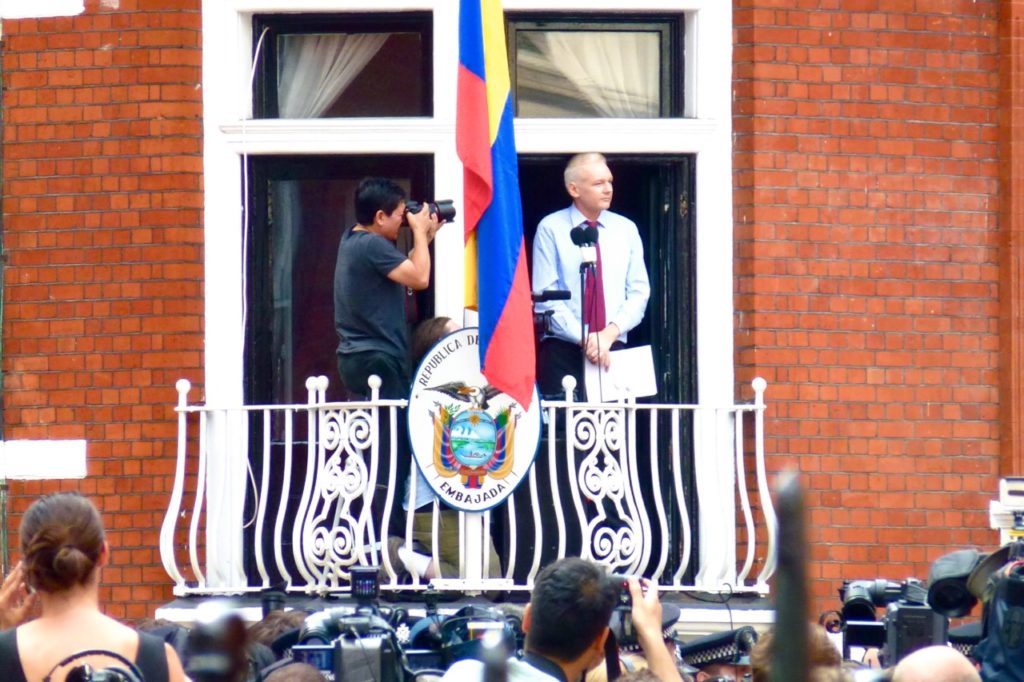
24. Pasillo is a popular type of Ecuadorian music and dance. Meaning ‘small step’ the pasillo emerged during South American independence wars in the 19th century. It combines elements of indigenous music with more modern Latin influences.
(Source: UNESCO)
25. Some of the earliest ceramics discovered in the Americas were found in Ecuador. Pottery figurines and containers have been uncovered that date from 3000 to 2500 BCE.
(Source: Encyclopædia Britannica)
26. The 6,263m-high summit of Mount Chimborazo, Ecuador’s highest mountain, is the point on Earth closest to the sun. Due to the mountain’s location along the equatorial bulge, its summit is the farthest point from the Earth’s core – even farther than the world’s highest peak, Mount Everest. This also means that Ecuador is the closest country to space.
(Source: National Ocean Service)
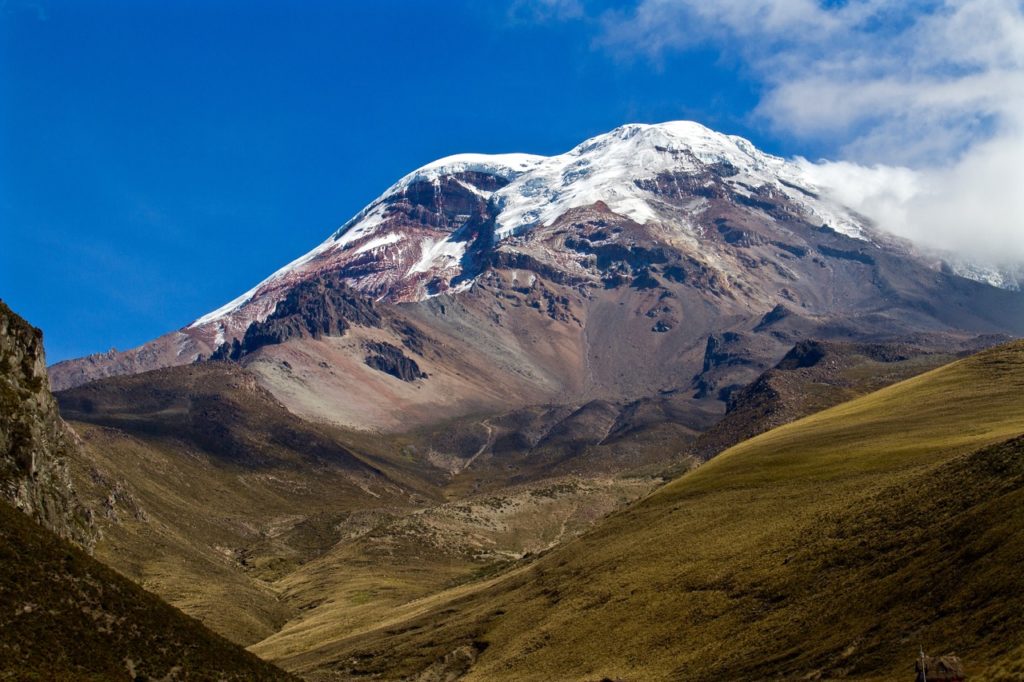
27. Ecuador is divided into four main and unique geographic regions: La Costa or ‘the coast’, La Sierra or ‘the highlands’, La Amazonía also known as El Oriente or ‘the east’ and La Región Insular, the region comprising the Galápagos Islands.
(Source: Lonely Planet guide to Ecuador & the Galapagos Islands)
28. Most people know about Peru and Machu Picchu but not everybody is aware that Ecuador was also part of the Inca Empire. From 1450 to 1534, Ecuador was under Incan control until the Spanish arrived and defeated the Incan armies.
(Source: Embassy of Ecuador)
29. The UNESCO-listed Sumaco Biosphere Reserve in Ecuador has trees that can ‘walk’ up to 20m a year – approximately two centimetres a day. The ‘walking’ palm trees relocate as they sprout new roots which take hold and move the tree towards better sunlight.
(Source: BBC Travel)
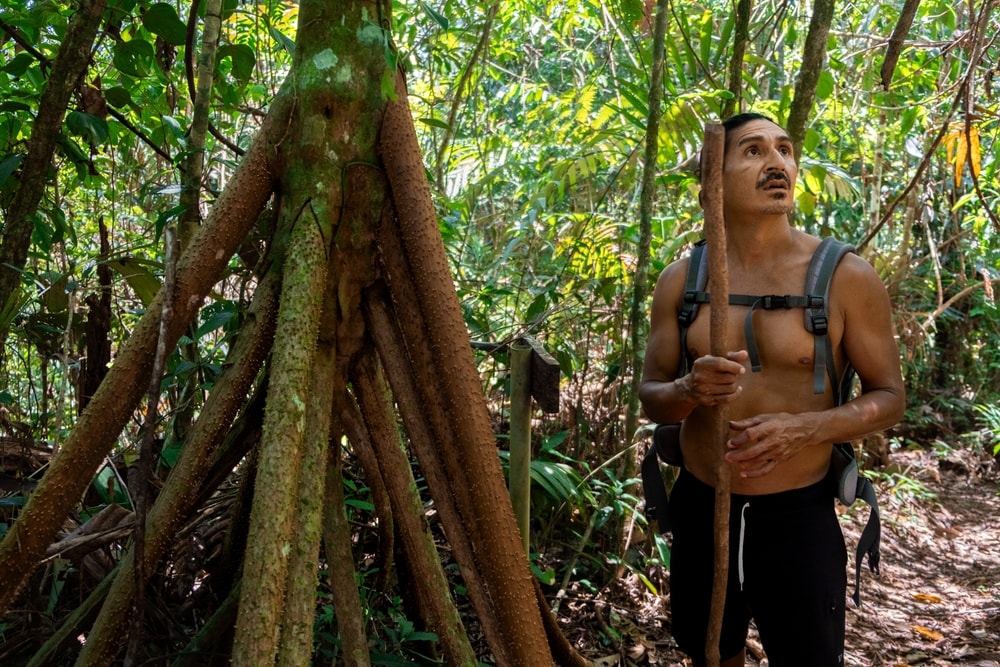
30. In 1997, Rosalía Arteaga was Ecuador’s first female president. However, she only served for two days as the National Congress hastily rewrote the constitution to allow her political rival to take power.
(Source: Encyclopædia Britannica)
